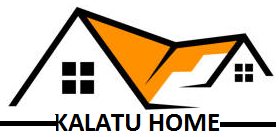Preserving our architectural heritage goes beyond mere facades; it involves a meticulous process of documenting historical buildings and sites to capture their essence and ensure their longevity for future generations. This guide delves into the world of historic documentation, highlighting its complexities, methods, and profound importance in safeguarding our cultural identity.
Understanding Historic Documentation
Historic documentation serves as a vital tool in preserving the authenticity and historical significance of buildings and sites. It involves capturing detailed records of architectural features, construction techniques, and historical contexts. This documentation not only aids in conservation efforts but also serves as a valuable resource for researchers, historians, and preservationists seeking to understand and interpret our built heritage.
Historic documentation encompasses various methods and techniques. Written documentation includes historical narratives and research papers that chronicle the evolution and significance of historical structures. Visual documentation, such as photography and sketches, captures the intricate details of buildings, while digital technologies like 3D scanning create precise replicas for preservation and research purposes.
Methods and Techniques
Architectural surveys play a pivotal role in documenting historical buildings. These surveys involve detailed examinations of building materials, structural elements, and architectural styles. By creating comprehensive architectural drawings and floor plans, surveyors ensure accurate documentation of historical structures, aiding in restoration and conservation efforts.
Photographic documentation is equally crucial, capturing the visual essence of historical buildings. High-resolution photographs document architectural features, interiors, and changes over time, providing valuable insights into the building’s history and evolution. This visual record serves as a cornerstone for preservation projects and educational initiatives aimed at raising awareness of our architectural heritage.
Digital technologies have revolutionized historic documentation with advanced techniques like 3D scanning and laser scanning. These technologies create detailed digital models and virtual tours that replicate historical buildings with unparalleled accuracy. Such digital documentation not only preserves fragile structures but also enhances accessibility for researchers and the public alike.
Importance of Historical Research
Effective historic documentation relies on robust historical research. Archival research involves delving into historical records, maps, and photographs to trace the building’s origins, ownership history, and past uses. This archival data provides invaluable context for understanding the building’s significance within its historical and cultural milieu.
Contextual research complements archival findings by exploring broader social, economic, and cultural factors that shaped the development of historical buildings. By integrating oral histories and community perspectives, researchers enrich the narrative of each building, fostering deeper appreciation and understanding of its cultural legacy.
Challenges in Historic Documentation
Despite its importance, historic documentation faces several challenges. Balancing preservation with necessary repairs and updates poses a perennial dilemma. Preservation efforts must respect the building’s historical authenticity while addressing structural integrity and modernization demands, often requiring careful negotiation and collaboration among stakeholders.
Documentation standards also present challenges, as preservation guidelines evolve with new research and technologies. Ensuring adherence to ethical standards and cultural sensitivities in documentation practices is crucial to maintaining respect for diverse heritage narratives and communal identities.
Future of Historic Documentation
Looking ahead, technological advances promise to reshape historic documentation practices. Innovations in artificial intelligence and machine learning hold potential for automating documentation processes and enhancing data analysis capabilities. These advancements offer new opportunities to expand digital archives and improve preservation strategies for future generations.
Community involvement remains integral to the future of historic documentation. Engaging local communities in preservation efforts fosters a sense of ownership and stewardship over cultural heritage. Public awareness and advocacy play pivotal roles in securing support and funding for ongoing preservation initiatives, ensuring the sustainable preservation of our architectural legacy.
Conclusion
In conclusion, historic documentation stands as a cornerstone of preserving our architectural heritage. By employing diverse methods and embracing technological advancements, we can capture the essence of historical buildings and sites, ensuring they endure as living testaments to our cultural identity and collective memory.
Explore the world of historic documentation with STUDIO @ Westmoreland Farm. Our dedication to preserving architectural heritage through meticulous documentation and thoughtful conservation strategies ensures a lasting legacy for future generations. Contact us today to learn more about our expertise and how we can assist in documenting and preserving your historical treasures.

